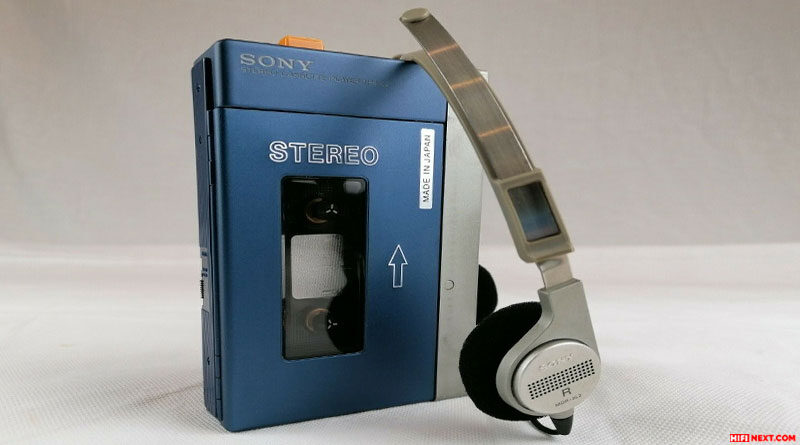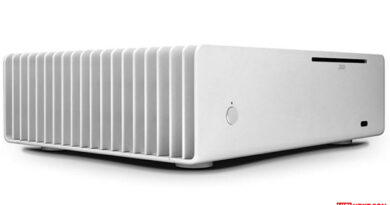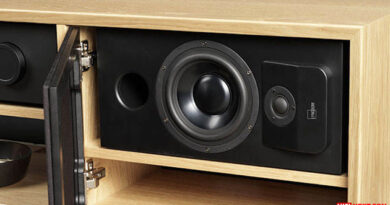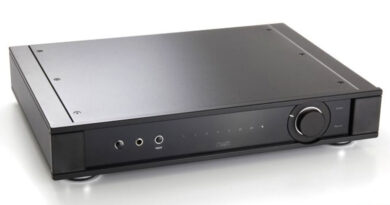The best portable cassette players in history: Walkman and all its rivals
Since 1979, and during the lifetime of the portable cassette player, a huge variety of models have been produced. There are all sorts of features manufacturers have tried to add to their models. From built-in radios and even TVs, to the ability to learn foreign languages. In this review we have tried to tell you about all the iconic and epochal models of vintage cassette players, as well as those that provided the highest quality playback.
Contents:
- Sony WM-2
- Sony TPS-L2
- Sony WM-3
- Aiwa HS-P1
- JVC CQ-1 K
- Toshiba KT-VS 1
- Aiwa HS-P2
- Sony WM-DD
- Sony WM-DC2
- Pioneer PK-F9
- JVC CQ-22K
- Sony WM-10
- JVC (Victor) CX-V9
- Sony WM-W800
- Sharp JC-AV1
- Aiwa HS-P7
- JVC CX-F7K
- Toshiba KT-AS10
- Aiwa HS-G8
- Panasonic RX-HD10
- Sony WM-505
- Toshiba KT-G770
- National RX-S41
- Sony WM-D3
- Aiwa HS-JX101 / JX10
- Sanyo JJ-W6
- Aiwa HS-PX30
- Panasonic RQ-S1
- Sharp JC-K99
- Sony WM-DD9
- Sanyo JJ-P101
- Aiwa HS-PL55
- Sony WM-FX5
- Sony WM-701S Special Edition
- Sony WM-EX1
- Panasonic RQ-SW70
- Sony WM-DD100 Boodoo Khan
- Panasonic RQ-SX20
- JVC (Victor) CX-10
- Panasonic RQ-S55
- Aiwa HS-JX2000
- Panasonic RQ-SX7
- Sony WM-EX9
- Panasonic RQ-SX72
- Sony WM-D6C
- Panasonic RQ-SX97F
- Aiwa HS-JX707
- Panasonic RQ-SX91
- Sony WM-EX20
- Aiwa HS-PX1000
Sony WM-2
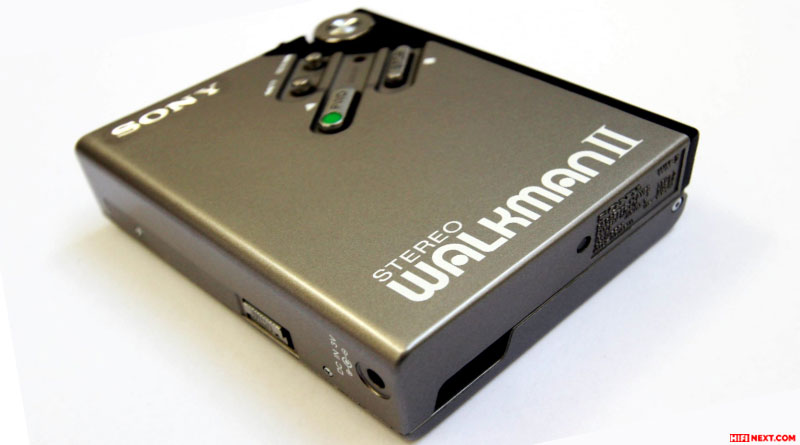
The second generation of the Sony Walkman, which appeared already in 1981, confidently took away the title of the “smallest” player in the world from the TPS-L2. However, a significant reduction in size led to the fact that only the engine remained unchanged from the original model, the rest had to be created anew. The batteries were accessed from inside the cassette compartment, so that they could no longer accidentally fall out, which sometimes happened with the first generation of the player. The case became so miniature that it was not possible to install a clip on it to mount the player on a belt, and a special holder was invented, with which the player could be placed on various parts of clothing. The second generation of the player broke all sales records – more than one and a half million copies were sold. The device weighed 280 grams and supported cassettes of the fourth type.
Sony TPS-L2
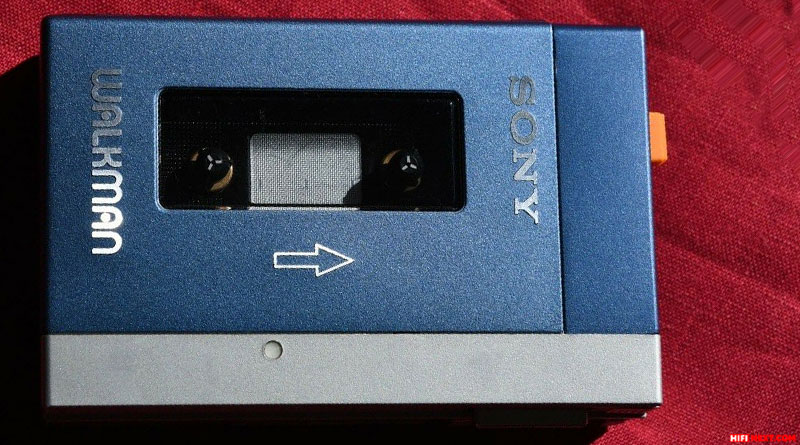
The cult device of 1979, for its time it was a very advanced player. The model was built on the basis of the Sony TCM-600 portable professional recorder, from which the recording head was removed, and the reproducing head was replaced with a stereo version. Instead of a microphone, the “hot line” function appeared, when the corresponding key was pressed, the volume level was forcibly lowered, and the owner of the player could hear the world around him. There was no support for Dolby NR yet, but there was a two-position switch that allowed you to listen to the corresponding cassettes without too much emphasis on high frequencies.
Sony WM-3
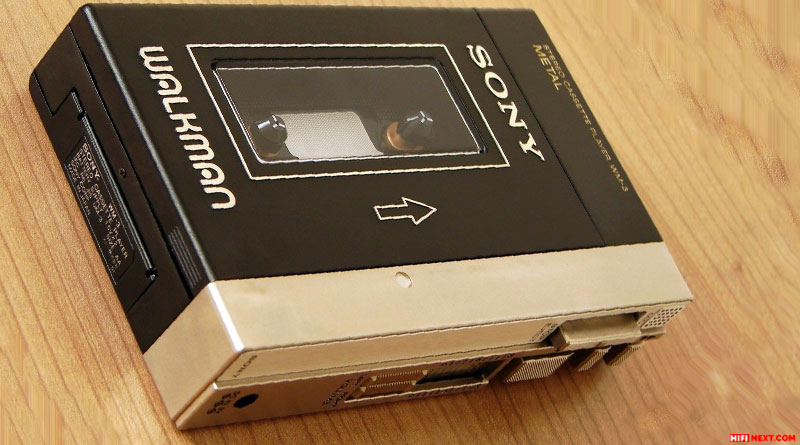
The second version of the original portable cassette player, released in 1981 and originally called the Walkman. The changes were rather cosmetic in nature – for example, the famous “play” button appeared, replacing “listen”, a latch on one key was added, the power socket was changed. The carrying case, again, has been redesigned to be black (rather than blue). Neither the mechanics nor the electronics have changed – but as a follower, the device is now valued a little less than the original.
Aiwa HS-P1
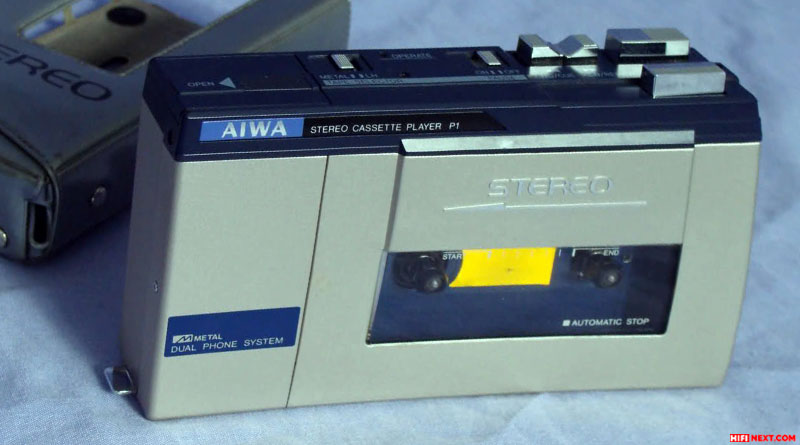
One of the company’s first portable cassette players was released in 1981 for the company’s 30th anniversary. It featured a high quality auto-stop tape drive – measured knock coefficient was very low – and could handle any type of cassette. Two pairs of headphones could be connected to the player. The model weighed 345 grams, the battery life was 8 hours.
JVC CQ-1 K
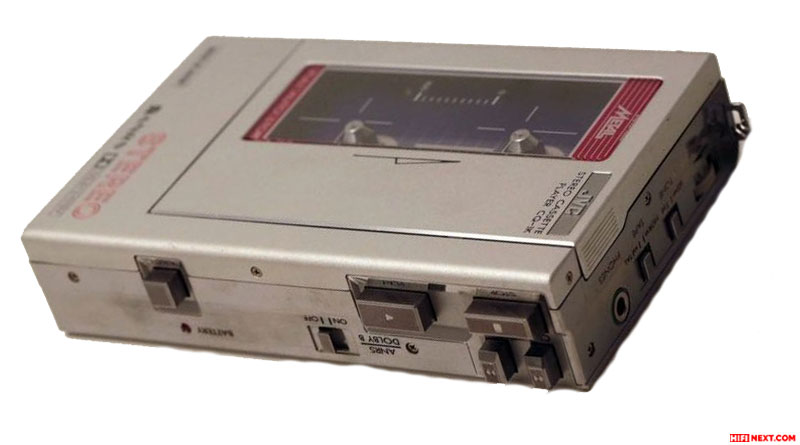
The beautiful and stylish 1981 player was one of the best on the market at the time. The tape drive mechanism supported full auto-stop and rewind in both directions, the player could play cassettes of the fourth type. But the most remarkable thing is the presence of two noise reduction systems at once – Dolby B and proprietary ANRS, which many still consider the best version of such systems of all time.
Toshiba KT-VS 1
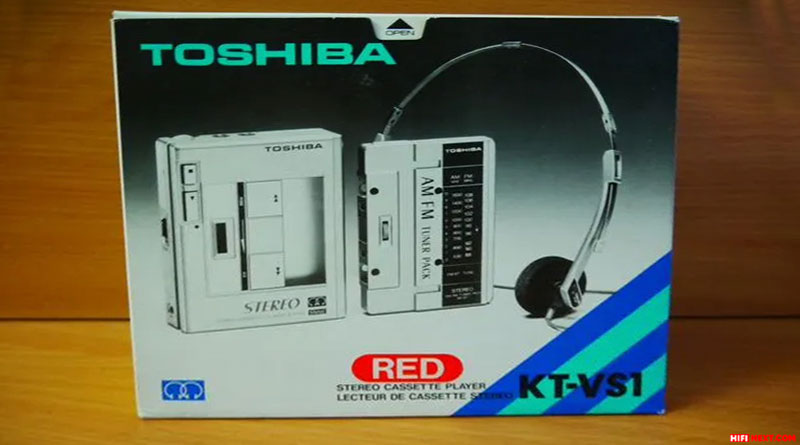
The top player of 1981 from the Walky series – this is how Toshiba called their portable cassette players. In addition to an excellent mechanical part and a high-quality head with the support of a tape of the fourth type, the model was distinguished by a removable radio receiver unit made in the form of a cassette. To listen to radio broadcasts, it had to be inserted into a cassette receiver. Of course, in this case it was no longer possible to listen to ordinary cassettes, one had to choose one thing.
Aiwa HS-P2
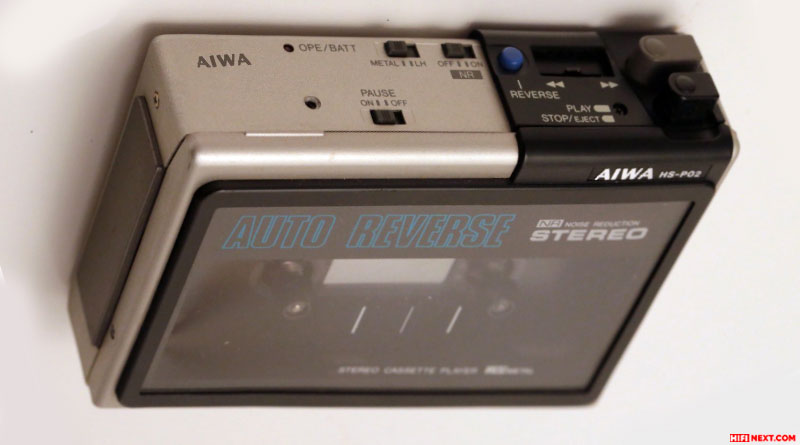
The world’s first portable player equipped with an auto-reverse function was released by a Japanese company in 1982. Naturally, all other manufacturers quickly pulled themselves up, but the championship still remained with Aiwa. Other features include a noise reduction system, Type 4 tape support (Metal) and a large transparent cassette cover. The player was not the smallest and weighed 320 grams.
Sony WM-DD
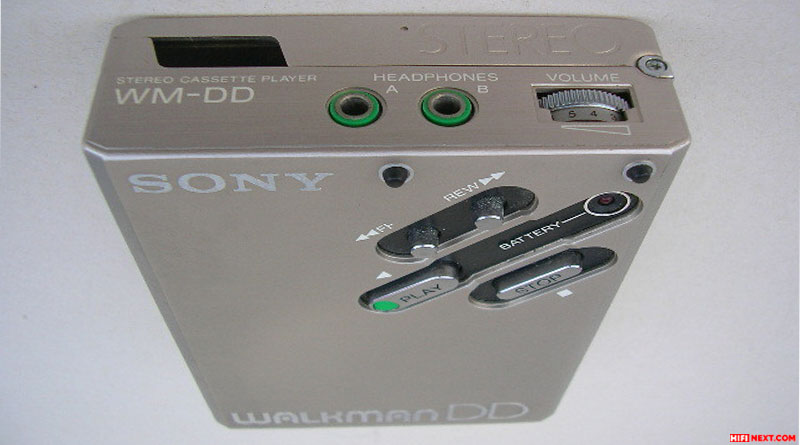
The first DD was launched in 1982 and immediately earned the love of the public. In terms of both craftsmanship and sound, the model turned out to be superb. The electronics were taken from its predecessor, but the addition of a disc drive servo (plus a tacho encoder) significantly improved the performance and reduced the player’s overall size. The casing was all-metal and weighed 240 grams.
Sony WM-DC2
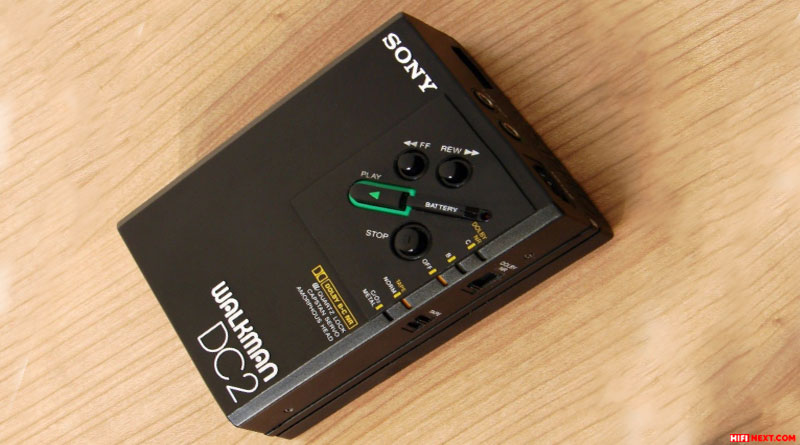
The third generation “direct drive” Walkman featured all possible Dolby NR systems, including the C version. It even earned the title “professional“, although it was also found in the consumer market. In addition to the latest Dolby C system, pioneered by the portable player (which required Sony to build its own customised circuits), it featured a laser-amorphous playhead that was unique in portable technology and offered increased durability. It also featured a line output that allowed the player to be connected to a fixed amplifier.
Pioneer PK-F9
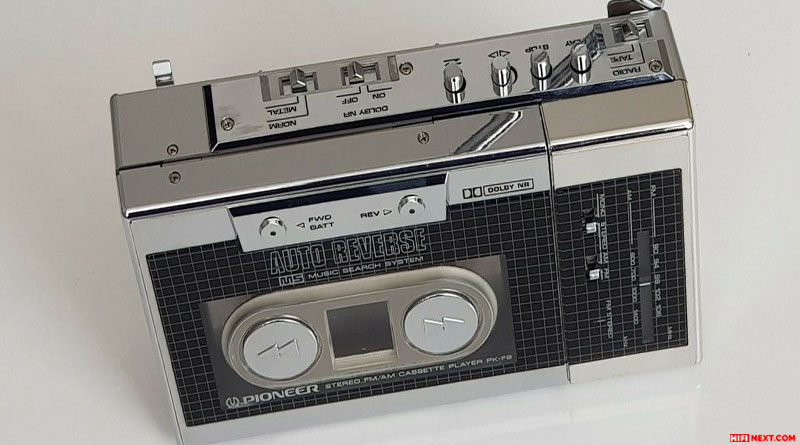
A rare Pioneer (1983) player that boasted a detachable radio in a separate unit, a telescopic aerial, an auto-reverse and a tape direction indicator. It supported the Dolby B noise reduction system and the rewind keys were located on the cassette cover. It was a pity that Pioneer didn’t end up developing a portable player.
JVC CQ-22K
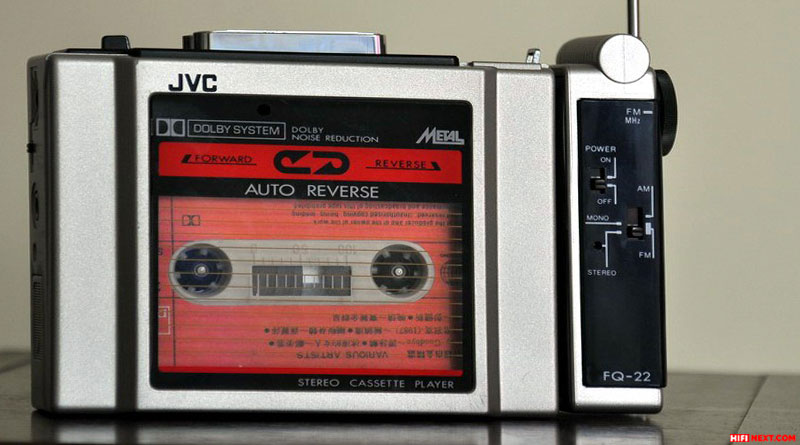
One of the early JVC portable players of 1983 featured a solid design, a smaller size than the competition and excellent sound. It had full auto-reverse, support for all types of tape, including metal tape, and a Dolby B system. An original feature was the ability to connect a removable tuner unit attached to the case. The player weighed around 300 grams.
Sony WM-10
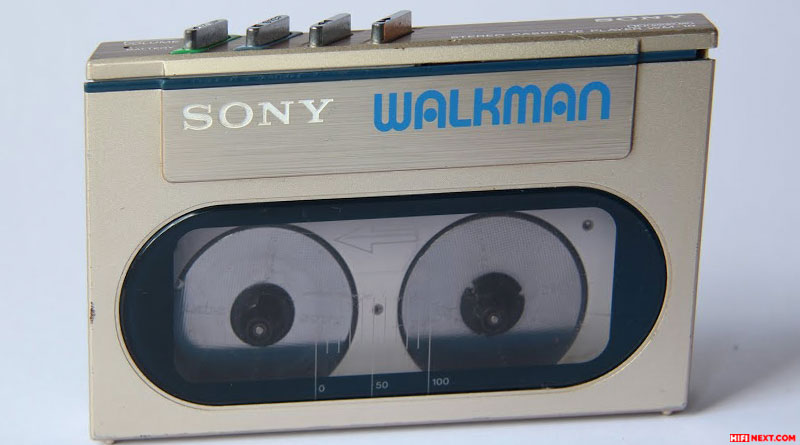
A uniquely compact Sony Walkman – it was smaller than the cassette itself! In order to insert the cassette into the player, the casing of the Sony WM-10 had to be pulled apart. The creation of the Sony WM-10 required Japanese engineers to develop a special miniature brushless motor, similar to the ones used in vinyl players at the time. Another problem was the number of batteries. The size didn’t allow space for two AA size batteries, so it was decided to keep just one, and a special step-up converter was used to boost the voltage to a suitable level. Despite its diminutive size, functionally it was a complete player, supporting all types of tape and equipped with Dolby B NR.
JVC (Victor) CX-V9
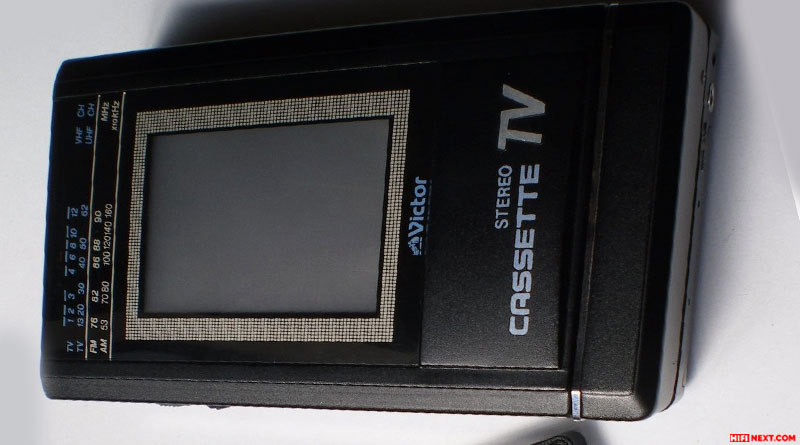
Amazing JVC (Victor) CX-V9 player from 1986 with built-in LCD TV. For its era, it was a breakthrough product. The presence of the possibility of receiving TV programs did not prevent the player from being equipped with a good tape drive mechanism with quasi-touch control, auto-reverse and support for the Dolby noise reduction system. The kit included a detachable telescopic antenna and a stand with rechargeable batteries.
Sony WM-W800
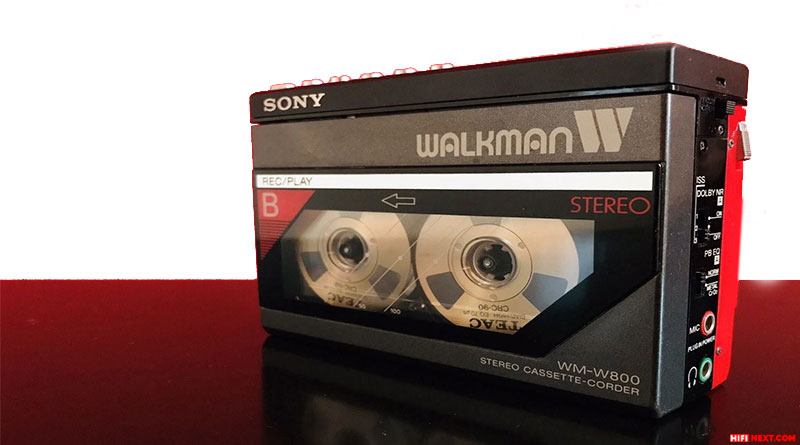
This dual cassette player is the first and only Walkman with the ability to re-record from one cassette to another. From a technical point of view, the device consisted of two WM-10 tape recorders combined in one case. The master deck supported playback and recording on all types of tape, including chrome and metal, while the second deck only worked with ferrite cassettes. Present in the model and built-in microphone. Due to its material-intensive design, the device turned out to be very expensive and did not sell very well.
Sharp JC-AV1
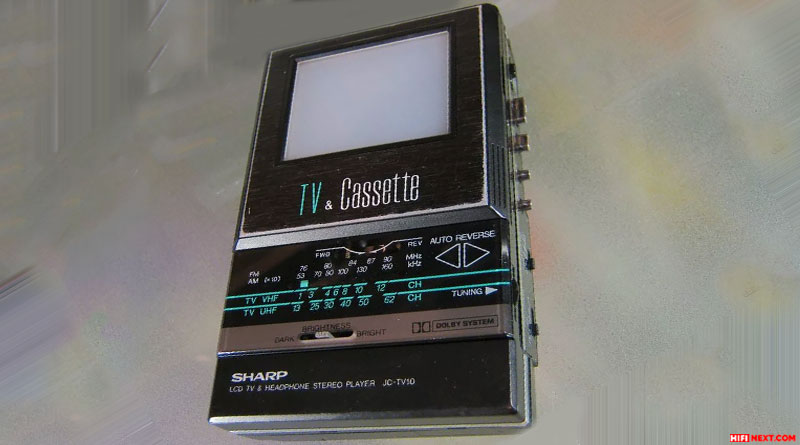
Another cassette player from 1986 with built-in LCD TV? Yes, it was. The Sharp JC-AV1 had both auto-reverse and auto-stop, but the most incredible feature was the presence, in addition to radio, a television receiver and a liquid crystal display. He radiated in the direction of the mirror inside the case, on which it was possible to watch TV programs.
Aiwa HS-P7
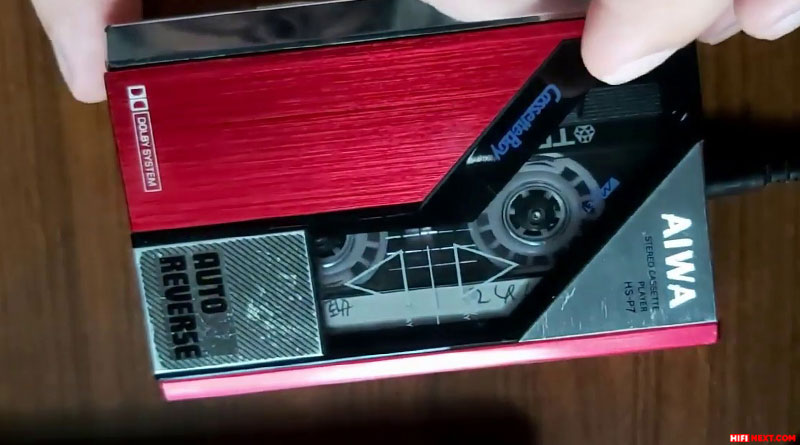
The most famous, along with the first Sony Walkman, portable player in the world. And all thanks to the film “Back to the Future“, because it was with him that Marty McFly went and with his help he sent his unlucky father in the past on a date with his young mother. The Aiwa HS-P7, released in 1984, had an auto-reverse and track search system, supported all types of tape and the Dolby noise reduction system. The player weighed 275 grams.
JVC CX-F7K
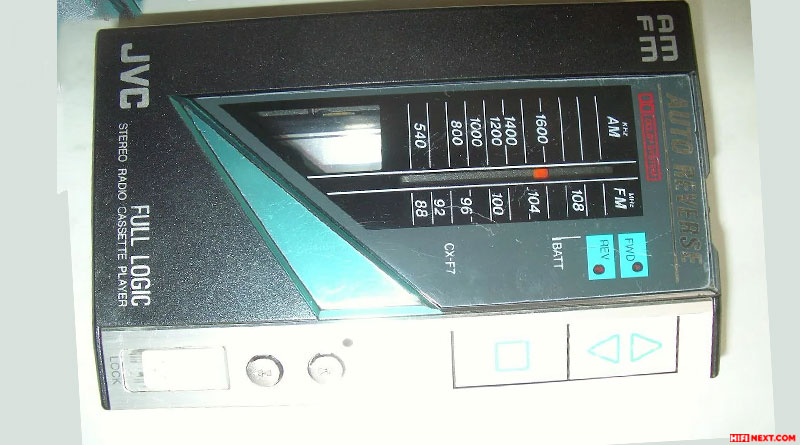
The JVC CX-F7K came out in 1985 with rich features and high sound quality. It featured full logical control of the tape drive with quasi-touch keys, support for the Dolby NR system and all types of tape with manual switching, auto-stop and a built-in radio. The case was metal, the player worked from one AA battery.
Toshiba KT-AS10
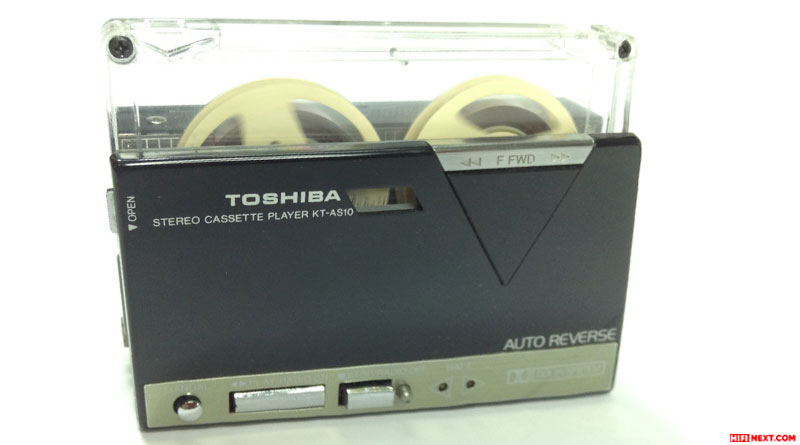
The Toshiba KT-AS10 is a 1985 model that is unsurpassed in its miniature size. An attempt to create the smallest player led to the emergence of a model that was significantly smaller than the cassette itself. And if competitors solved the issue by creating a sliding case, then Toshiba developers decided that it would do anyway. As a result, the cassette stuck out during playback. The kit also included a removable tuner unit, made in the form of a cassette cut by one third. The playback unit, however, was quite good, with full hitchhiking and metal tape support.
Aiwa HS-G8
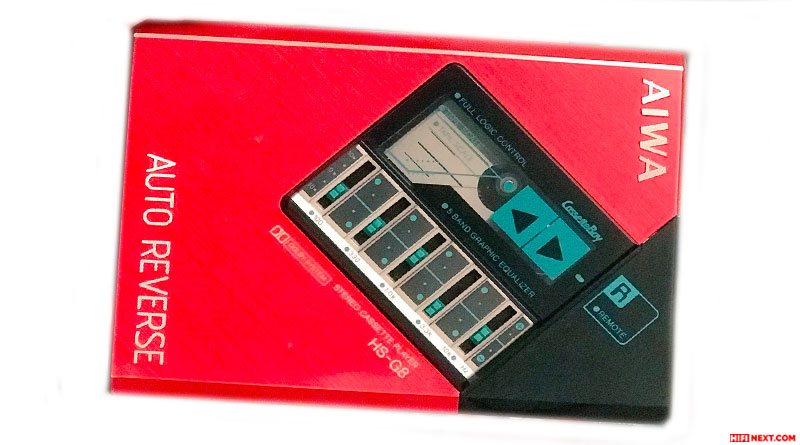
The Aiwa HS-G8, the top of the range player in the 1985 Cassette Boy series, featured cutting-edge equipment. Features included full logical LPF control with touch keys, remote control, five-band graphic equaliser, pause search, Dolby noise reduction system, and dual headphone connectivity. It was available in seven different colours.
Panasonic RX-HD10
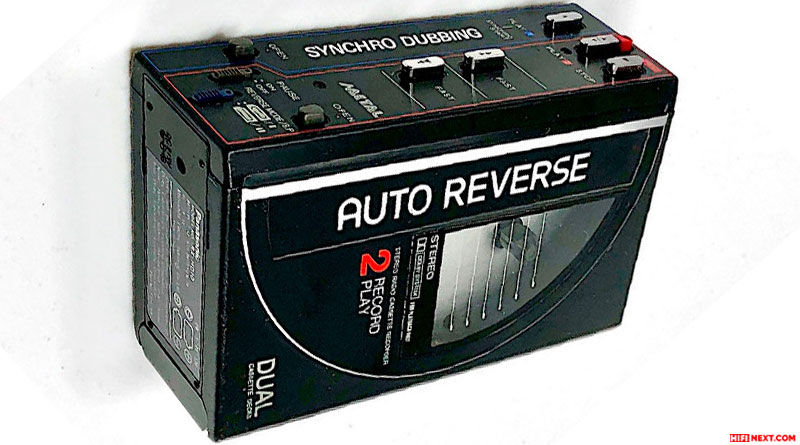
Another rare device is the dual cassette recorder Panasonic RX-HD10, launched in 1986 to compete with Sony. However, it was never developed, so it was relegated to the category of exotic rarity. Unlike the rival model, it had an autoreverse and a remote radio unit. There was support for the Dolby noise reduction system and the possibility of synchronous re-recording. It weighed 260 grams.
Sony WM-505
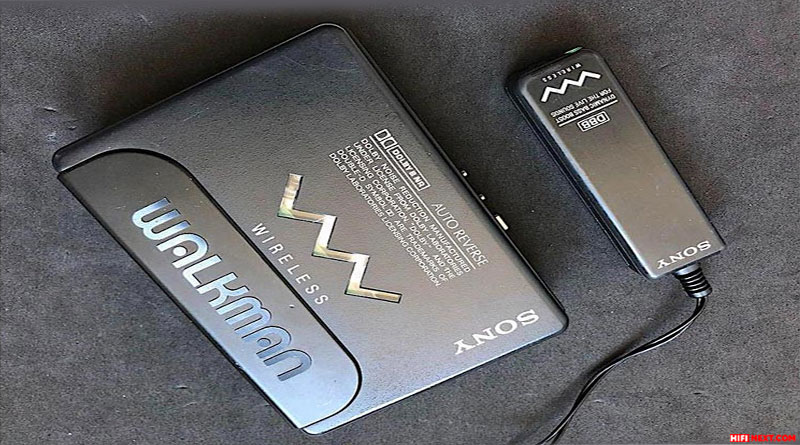
The first Sony Walkman wireless player appeared in 1988. Of course, back then, the signal was transmitted via radio frequency, using two separate transmitters for the left and right channels of the headphones. Frequency range was quite decent, from 30 to 15 000 Hz, which was enough for most occasions. The player weighed 210 grams, supported the Dolby B system and auto-reverse, and came with a battery and an external removable battery pack.
Toshiba KT-G770
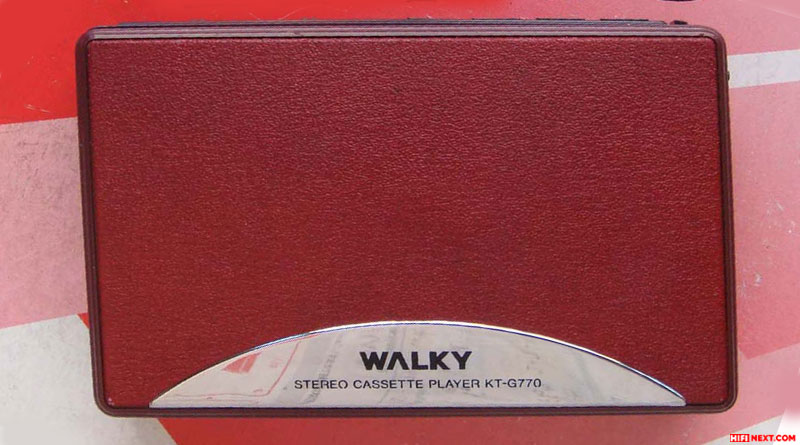
Most of Toshiba’s instruments did not reach the technological heights of Sony, Aiwa or Panasonic, but they did so with their original design and bright colours. One example is the Toshiba KT-G770. Basic requirements for a cool player are fulfilled here – Dolby B NR support, XLS bass extension system, work with different types of films. But the main feature of this model is the red leather front and back panel!
National RX-S41
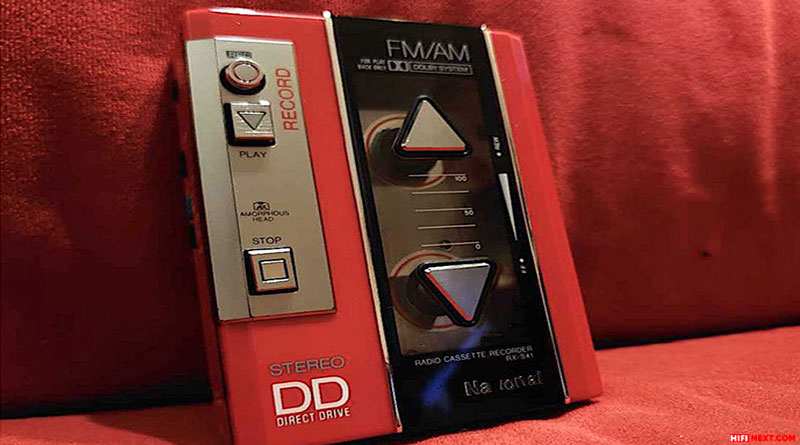
The National RX-S41 was a competitor to the Sony DD-series and was released in 1985. It also had a direct drive, could record in stereo and had all the controls on the cassette cover. Dolby support was available, as was an external microphone. It was powered by two alkaline batteries for 6 hours and weighed 275 grams.
Sony WM-D3
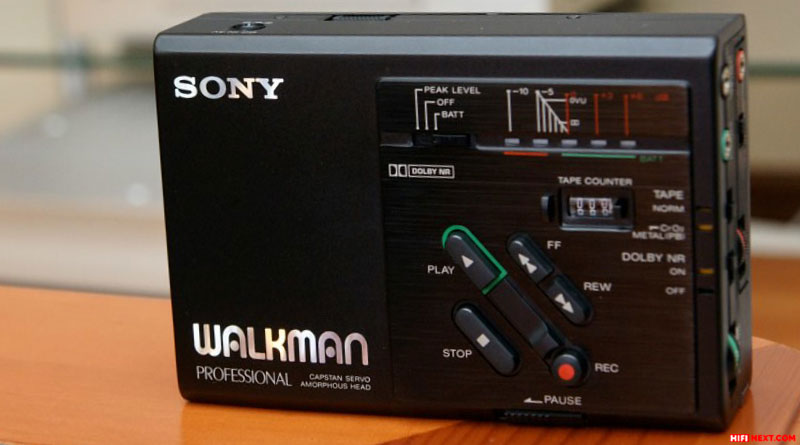
The Sony WM-D3 is the junior of the two professional Walkman recorders, released in 1985 and produced for 15 years. It featured superb mechanics and the use of an amorphous head. It even had a tape counter and recording level indicators. The model worked with all types of playback tapes, but only recorded on ferrite and chrome tapes. The model had a line output and separate level controls for playback and recording. The Sony WM-D3 weighed 370 grams.
Aiwa HS-JX101 / JX10
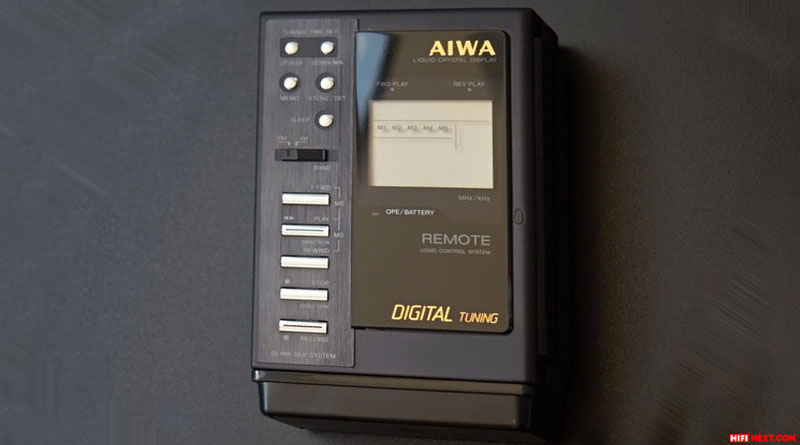
Aiwa was one of Sony’s main competitors in the cassette player market. The Aiwa HS-JX101 was a highly advanced 1987 model, combining a great deck with radio or microphone recording, auto-reverse and support for all types of tape and Dolby B. It also had a digital tuner and a wired remote control that allowed all playback and recording functions to be controlled. An external battery pack was also included, but the main power source was a rechargeable battery that could be charged in just one hour.
Sanyo JJ-W6
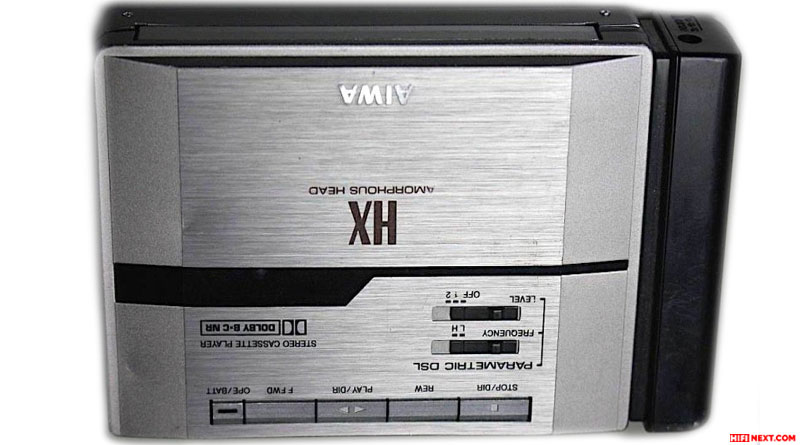
The 1989 Sanyo JJ-W6 model with wireless headphones did not save the customer the hassle of cables, as there were rather long wires coming from the radio, ending in plug-in headphones. The main advantage of the Sanyo JJ-W6 was its small size and the fact that it could easily be worn on clothing or placed in a breast pocket. The player was very well equipped, with support for various types of film, Dolby B noise cancellation system, and an extra battery compartment. There was even a velvet pouch for carrying it around.
Aiwa HS-PX30
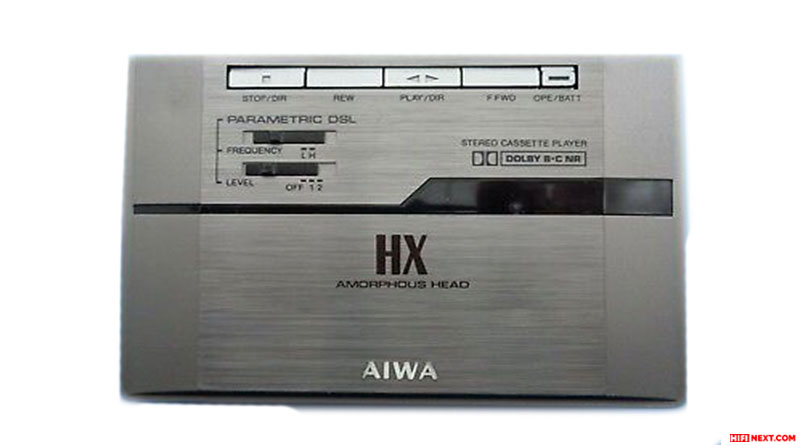
The Aiwa HS-PX30 is one of the attempts to create a portable cassette player that would be as good as a full-length deck in terms of sound quality. The key features of this 1989 model were the use of a quality HX amorphous iron head, the support of two noise reduction systems, Dolby B and C, and the presence of a DSL parametric system for powerful bass reproduction. A wired remote control and an external rechargeable battery were included. The frequency range with metal tape was 30 to 18000 Hz.
Panasonic RQ-S1
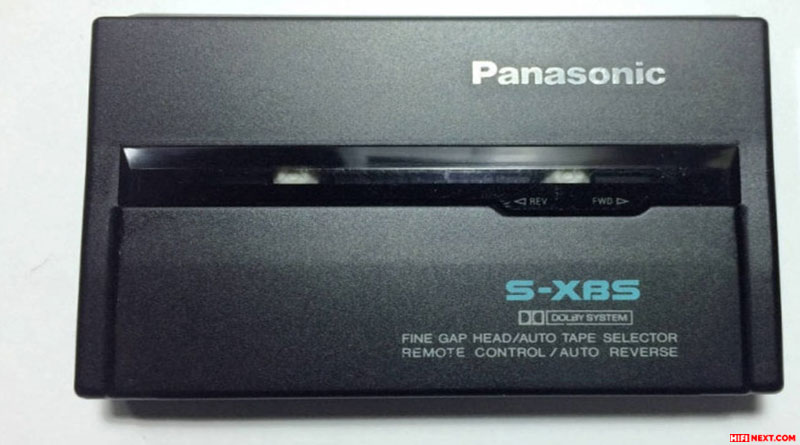
The Panasonic RQ-S1 was the first S-series player to focus on sound quality. Introduced in 1989, it featured a low-gap FG amorphous head, with a metal case that was only 17 mm thick and weighed 145 grams. The tape drive mechanism was auto-reversible, with Dolby, a corded remote control and a built-in battery which could power the player for 3.5 hours.
Sharp JC-K99
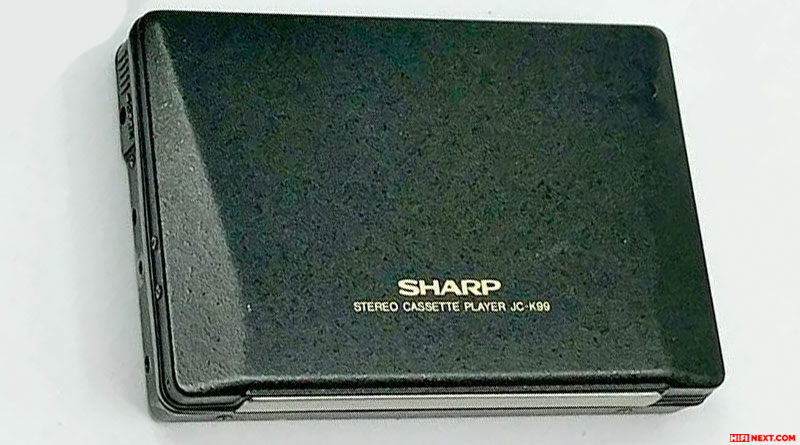
The Sharp JC-K99 was once the lightest cassette player in the world, weighing just 99 grams, all because its body was made of carbon fibre reinforced plastic (carbon)! This meant that it was also incredibly strong. It came in a choice of colours, supported Dolby and all types of tapes, and came with a wired full-featured remote control. It was powered by a built-in rechargeable battery or by an alkaline battery housed in an external unit.
Sony WM-DD9
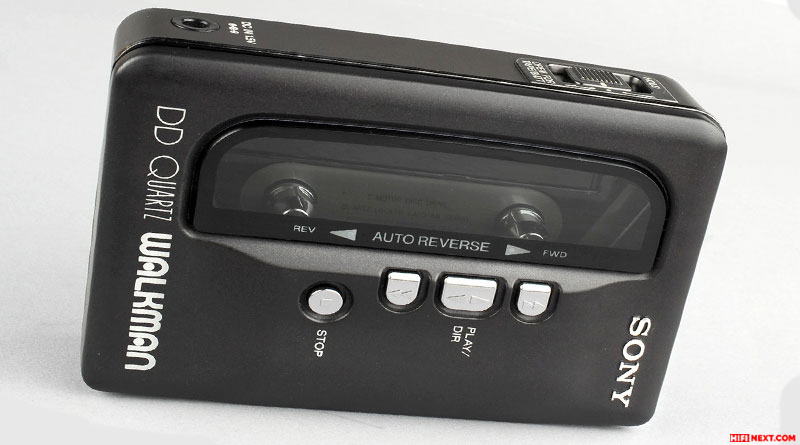
Released on the tenth anniversary of the release of the first Walkman, the Sony WM-DD9 set the industry standard for the rest of the 20th century. Packed to the brim with innovations (two motors providing auto-reverse, an LPM comparable to that of a stationary deck, digital speed stabilisation on a quartz oscillator), it stood out above all for its amorphous head, providing a frequency response of 20,000 Hz and its gold-plated headphone jack.
Sanyo JJ-P101
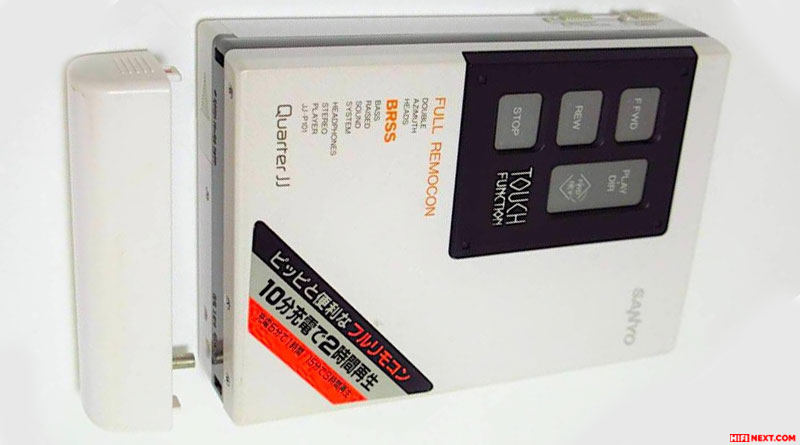
The Sanyo JJ-P101 hit the market in the early 1990s, but some of its features still look incredible today. Especially the transparent playback control touch keys on the cover of the unit. The user had the feeling that he got into the future, because no feedback in the form of a click was provided by these keys, the windows through which the tape was visible, you just have to press, like on the touchpad of a modern laptop. The deck of the Sanyo JJ-P101 was equipped with dual azimuth heads, so the tape drive mechanism was auto-reverse.
Aiwa HS-PL55
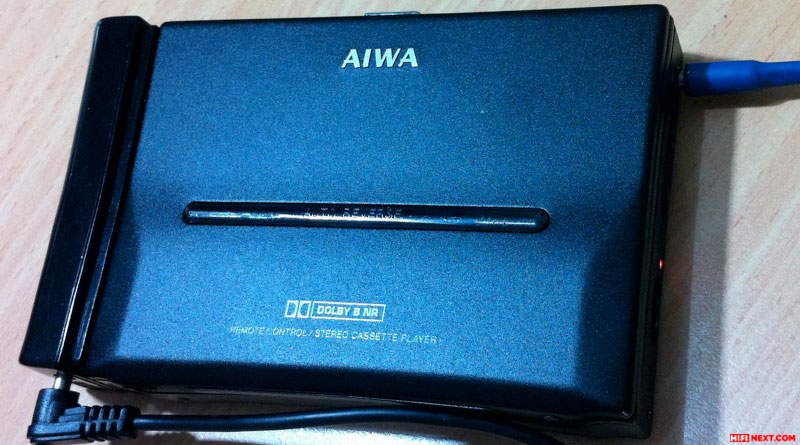
The beautiful and high quality 1990 player was encased in a metal case and came with a rechargeable battery with enough power for two hours of continuous use. It was possible to extend this time by using an external power pack for ordinary finger cells. Aiwa HS-PL55 featured a low-gap amorphous head, all tape types and Dolby B noise reduction. A two-tiered proprietary bass extension system called DSL and full auto-reverse were also present. The weight of the model was 170 grams.
Sony WM-FX5
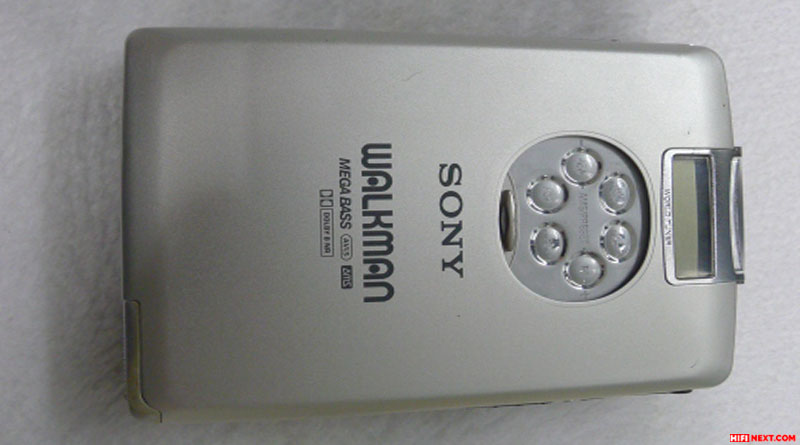
Sony WM-FX5 – A rare and interesting player from 1997, featuring a mirrored backside. On the other side were all the controls on the cassette-receiver cover, but the keys were covered by a neat curtain that had to be moved beforehand to prevent accidental presses in your pocket. A special feature was the presence of a television tuner, and the sound was also very decent – the presence of Dolby and Mega Bass systems helped.
Sony WM-701S Special Edition
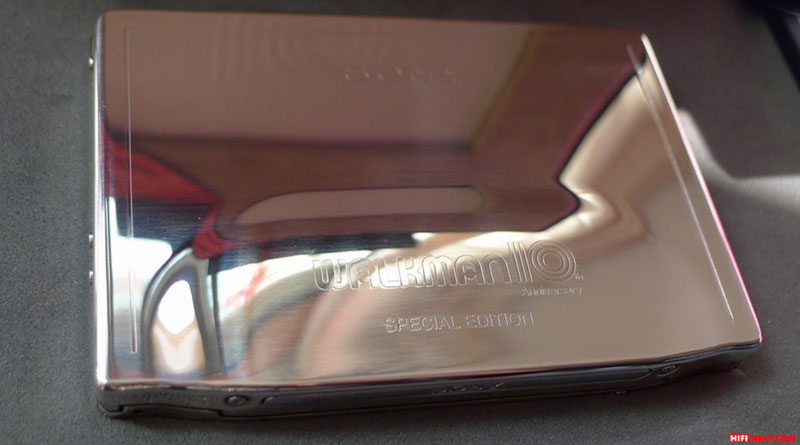
A limited edition commemorative version of the Sony WM-701s, released in 1989 to coincide with the tenth anniversary of the format. It featured a metal case coated with a layer of sterling silver and a matching inscription on the lid. Technically the player was no different from the basic model, which meant it had a remote control, supported the Dolby C system and weighed only 150 grams.
Sony WM-EX1
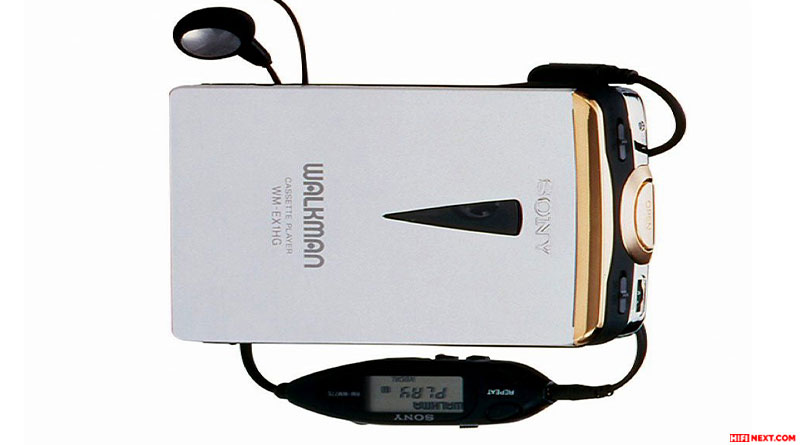
The Sony WM-EX1 was released in 1994 to mark the fifteenth anniversary of the Walkman format. It featured a chunky magnesium alloy case, fast track search – 25 times faster, a remote control with an LCD display on a wire, and quality headphones with good insulation. The model weighed 184 grams and could run for 12 hours on a single charge or 25 hours with alkaline batteries.
Panasonic RQ-SW70
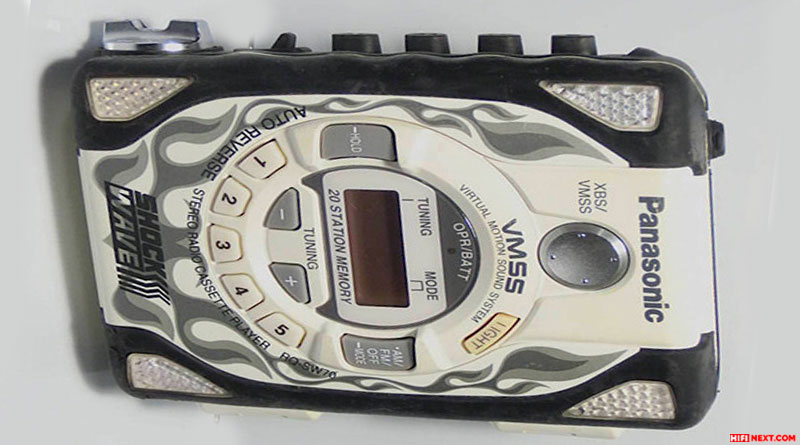
Arguably the most securely protected cassette player in history, produced since 1997 in the Shockwave series. The forged metal casing was joined by rubber gaskets and full water resistance. The model weighed 303 grams and also had a dual-band radio. Panasonic RQ-SW70 was powered by two alkaline batteries and had a power reserve of 6 hours.
Sony WM-DD100 Boodoo Khan
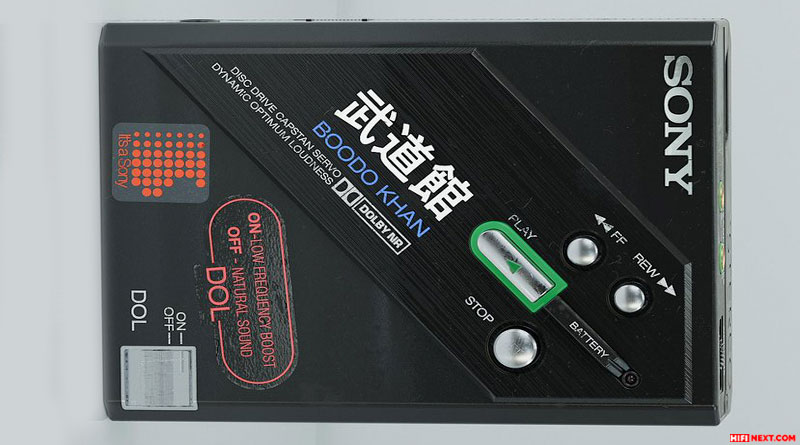
The 1986 portable player, which pioneered the proprietary Dynamic Optimun Loudness (DOL) tone-compensation system, designed to improve the sound of the bass range. It was with this model that the history of Mega Bass began, as well as all competing systems from other manufacturers. The package included the DR-S100 headphones, which were designed with this system in mind, to get the best out of it. It weighed 300 grams and ran for 9 hours on alkaline batteries.
Panasonic RQ-SX20
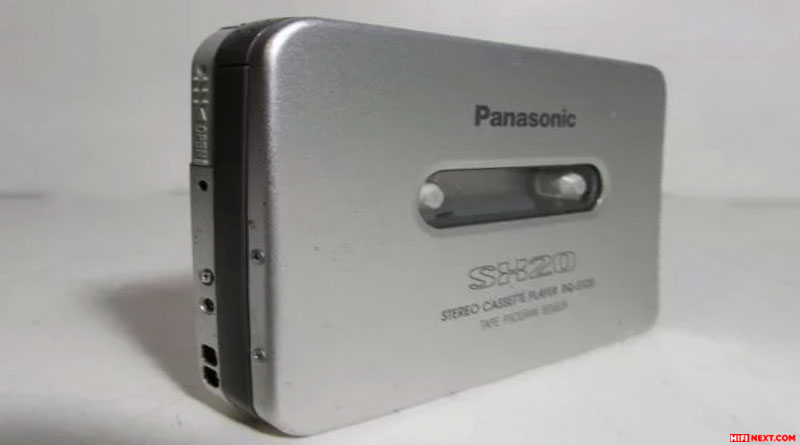
One of the company’s last quality player had an all-metal cabinet, a remote control on the headphone cord and support for Dolby B. All the LPMS controls were placed on the cassette cover. Panasonic RQ-SX20 weighed 160 grams and could operate for up to 45 hours with a combination of the built-in battery and an external battery pack.
JVC (Victor) CX-10
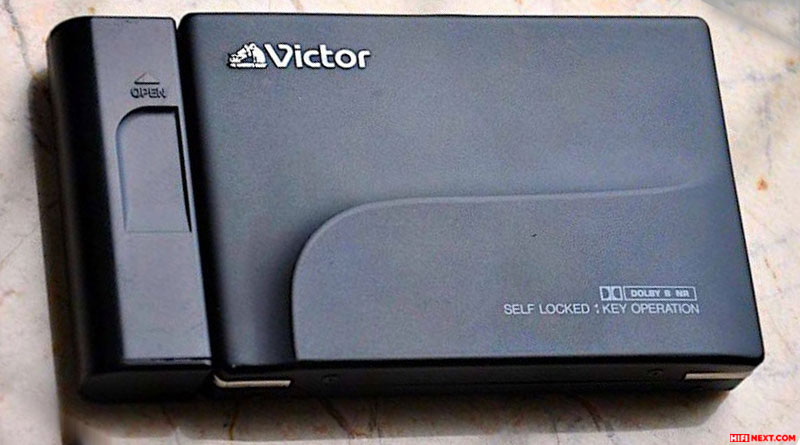
JVC CX-10 – the compact player of 1991 had an all-metal body and weighed 139 grams with a rechargeable battery. Power reserve when using the battery and external alkaline batteries was only 13 hours. The player had a Dolby B system and a wired remote control, the package also included a charger.
Panasonic RQ-S55
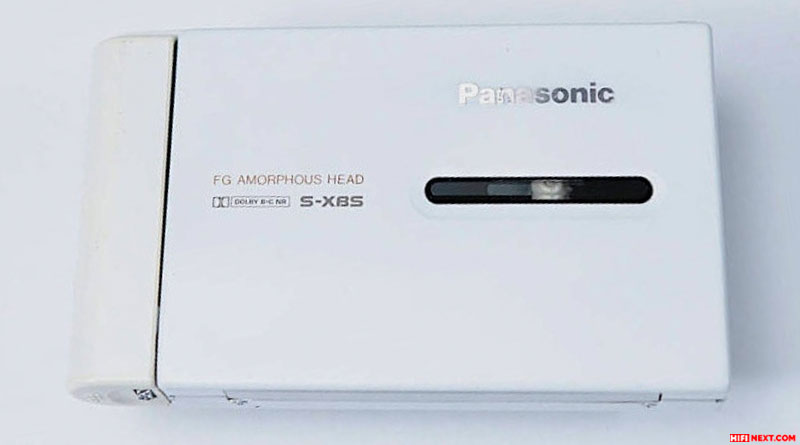
When designing this player from 1990, the emphasis was not on equipment with various features, but on sound quality. Therefore, the Panasonic RQ-S55 had a proprietary amorphous FG head, support for Dolby B and C noise reduction systems, and an S-XBS bass extension circuit. It had a built-in battery that could run for 2 hours on a full charge, and an external alkaline battery pack was also included. The model weighed 149 grams and was available in white and black, with a small remote control on the headphone cord.
Aiwa HS-JX2000
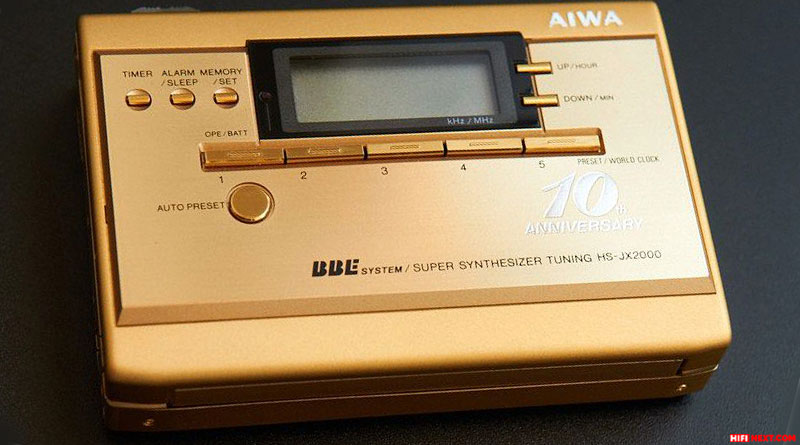
Launched in the early 1990s to mark the tenth anniversary of the Aiwa first player, the model stood out not only for its gold trim, but also for its excellent equipment and sound. The Aiwa HS-JX2000 featured a low-gap HX amorphous head, which provided excellent low-frequency response. Of course, the kit included a remote control on a wire, as well as an external microphone with stereo recording capability, plus a charger for the internal battery.
Panasonic RQ-SX7
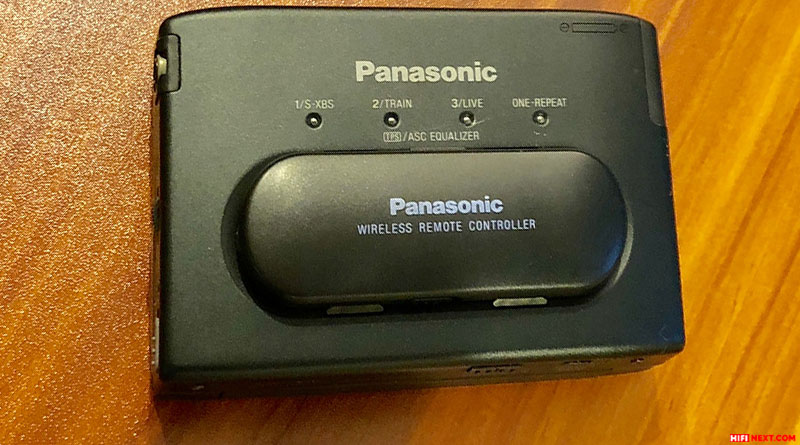
Panasonic RQ-SX7 – released in 1994, and was a very advanced player. Its main feature was the wireless remote control, which was attached to the body of the device with special latches. It also had several equalizer presets for different listening scenarios, and came with quality double diaphragm headphones, complete with a Vibration Sound system. The case was all-metal with Shell Lock and weighed 186 grams.
Sony WM-EX9
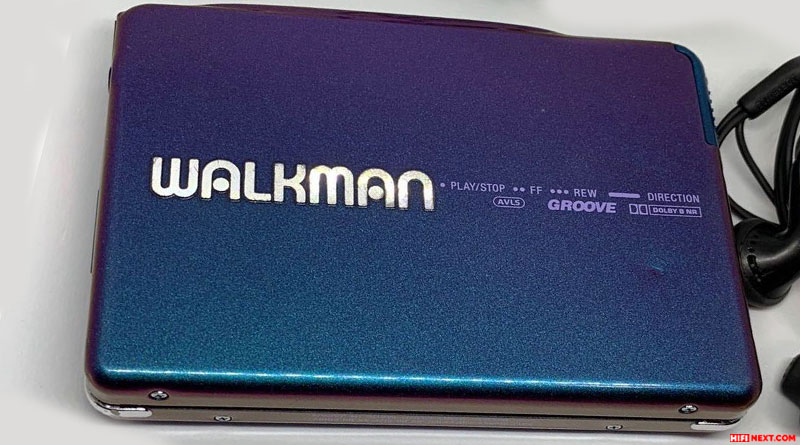
At the time the Sony WM-EX9 went on sale in 1998, it had the slimmest body of any player on the market at 17.4mm. It could run for 100 hours on external battery power and an internal rechargeable battery and had an all-metal casing. It had a wired remote control with LCD screen, was compatible with all types of cassettes and had the AVLS adjustable tonal compensation system. It weighed 165 grams.
Panasonic RQ-SX72
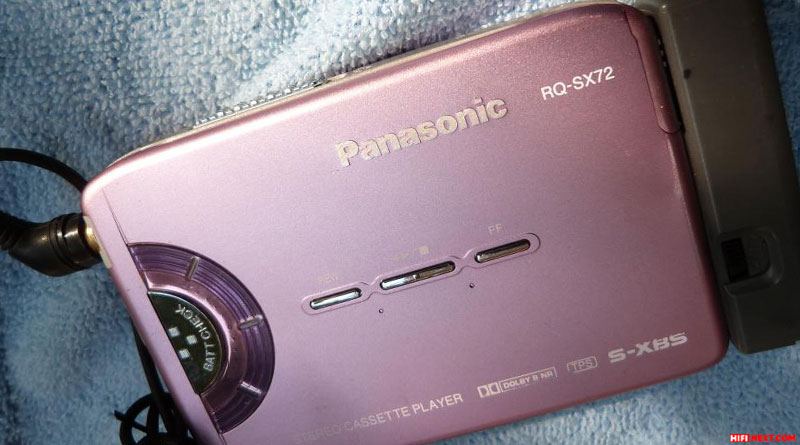
The Panasonic RQ-SX72 was a 1999 model, released for the format’s 20th anniversary, which set the record for the longest running time using a built-in battery and an external battery pack. It had a power reserve of 100 hours. The player was enclosed in an all-metal case and was available in a variety of colours. The wired remote’s LCD screen was backlit and there was an original colour-coded battery check system.
Sony WM-D6C
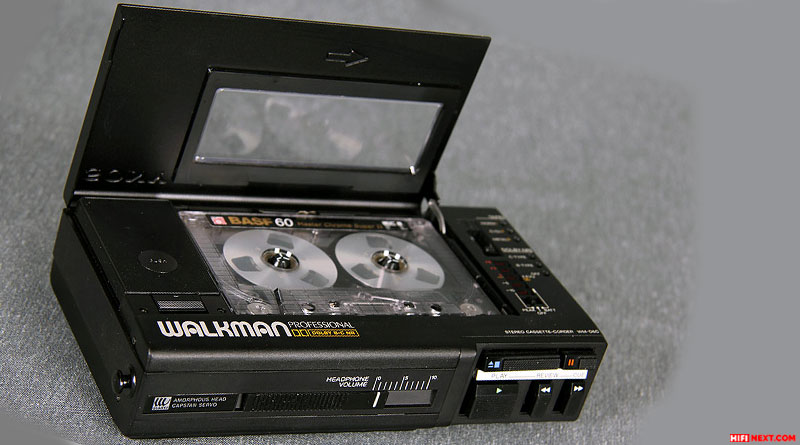
The Sony WM-D6C is a senior professional recorder from 1984, with quality comparable to the good stationary decks of the 1980s. The unit is housed in a very large case and can handle all types of tape. The mechanics and electronics are of a precision class, the sound quality is superb, as far as transparency, detail and coherence of the sound can not be matched by anyone else. The use of an amorphous iron head and the high quality of the LPMs have an effect.
Panasonic RQ-SX97F
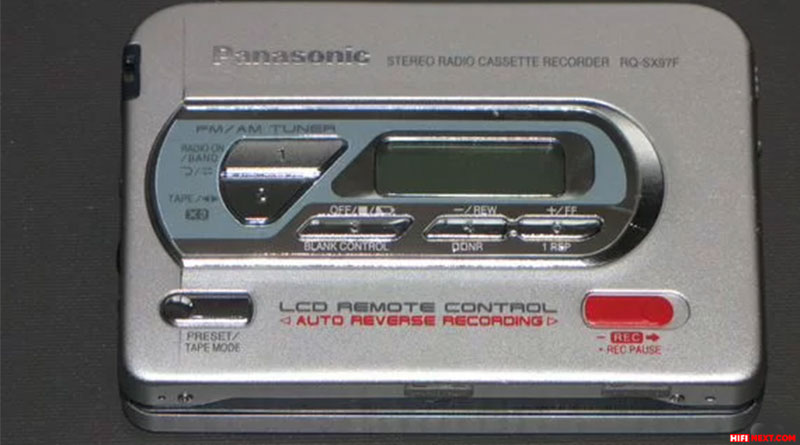
Panasonic RQ-SX97F – the firm’s most equipped player of recent years had a metal case and a solid array of features. These included bi-directional recording, remote control with LCD screen, built-in radio with memory cells and digital display, track search on cassette, Dolby B support. The built-in battery and external battery pack together provided over 80 hours of playback. The player weighed just 144 grams without batteries.
Aiwa HS-JX707
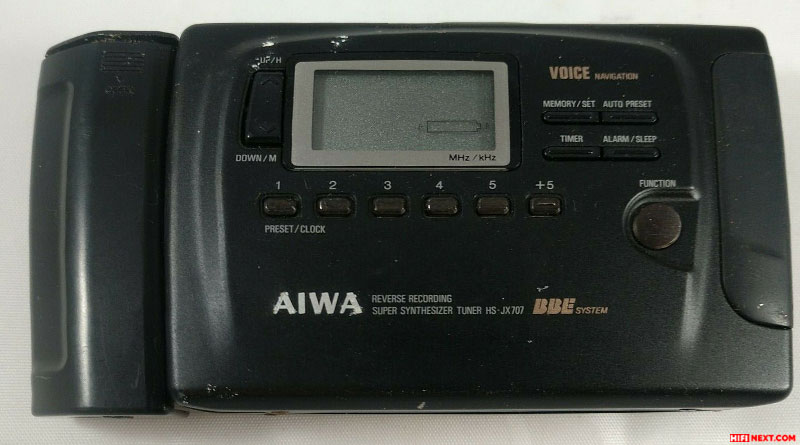
One of the best players of all time was released in 1992 and was distinguished by the highest quality of workmanship and sound, as well as extensive functionality. One of the original features of Aiwa HS-JX707 was the ability to continuously record on both sides of the cassette with the help of auto reverse, and the version with the letter D also had a built-in TV tuner. Even the motor in the player was three-phase and provided unsurpassed smoothness of rotation. Of course, the player had a remote control, supported all types of tape, the LCD display showed the battery charge and the operating mode of the LPM, as well as the frequencies of radio stations. The Aiwa HS-JX707 weighed 220 grams and could work from the built-in battery up to 2.5 hours.
Panasonic RQ-SX91
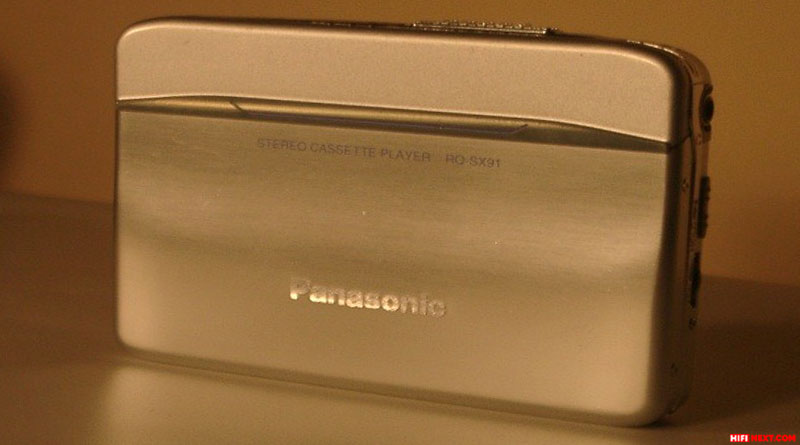
The Panasonic RQ-SX91 had an all-metal body with Shell Lock system, support for all types of tape with automatic tape detection, an LCD remote control on the headphone wire, rechargeable batteries, logic control and auto reverse. This is what the ideal portable cassette player looked like. The only pity is that it appeared on sale at the very end of the existence of the format, in 1999. The Panasonic RQP-SX91 player is a swan song of the format, but even today it looks very solid.
Sony WM-EX20
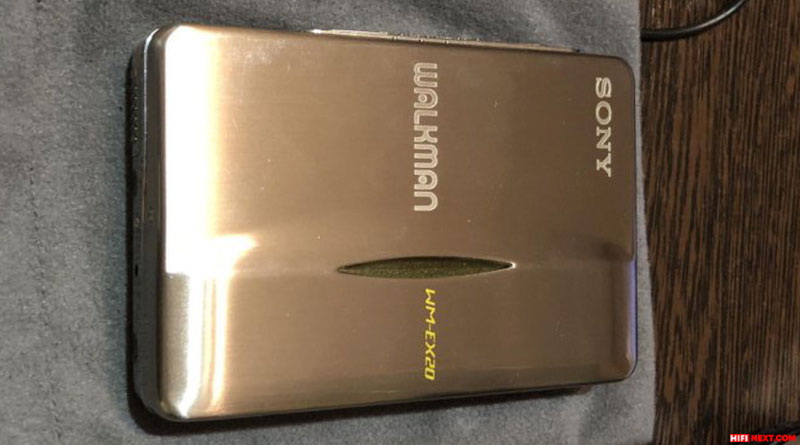
The Sony WM-EX20 was released in 1999 to mark the anniversary of the original Walkman model, and it reflected all the progress that had been made in the 20 years since the first true portable cassette player hit the market. The model was enclosed in a stainless steel case and the headphones were designed in the same way. A remote control with LCD screen was attached to the cord, and the set looked fantastic. As well as supporting all types of magnetic tape and keeping the cabinet as thin as possible, it featured double speed rewinding and Mega Surround 3D and Mega Bass sound enhancements. It weighs 180 grams and is only 16.9 mm thick at its thinnest.
Aiwa HS-PX1000
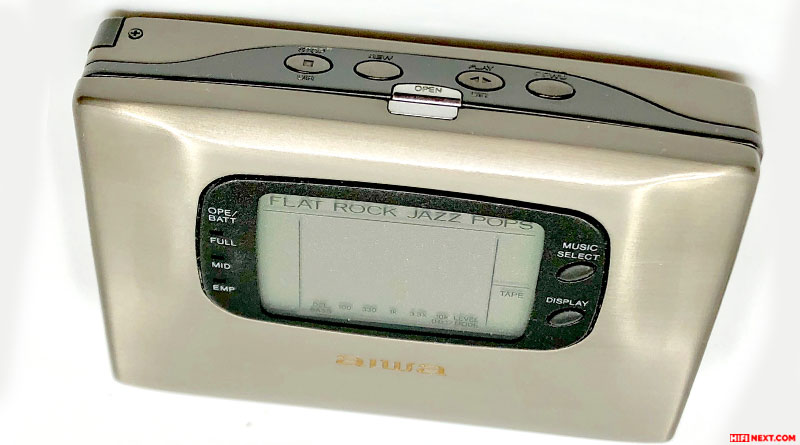
The ultimate 1991 player from Aiwa is rightly considered by many to be the best player of the format’s existence. One listing of functions is enough to understand how serious this player was. 100% titanium body, amorphous magnetic head, support for Dolby B and Dolby C noise reduction systems, built-in seven-band spectrum analyzer with LCD display. Of course, there was also a hanging battery pack, plus a decent-capacity battery was included. The owners claim that with a good cassette, the Aiwa HS-PX1000 plays better than expensive portable CD players of the same period.

